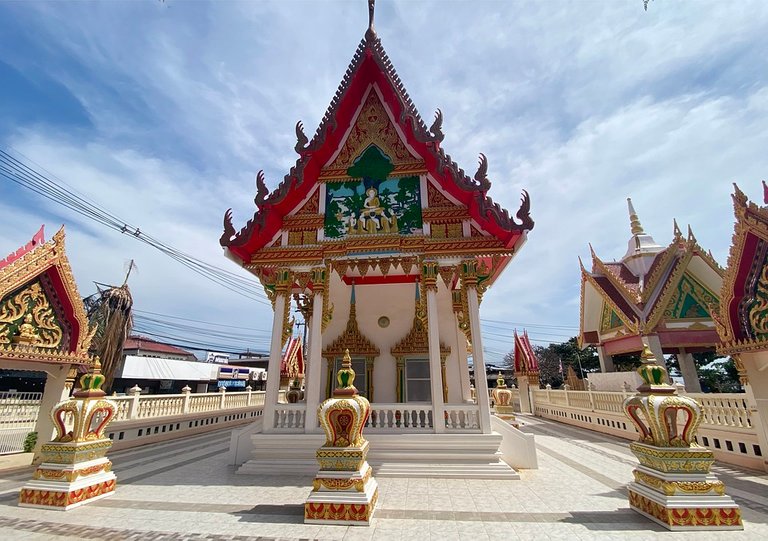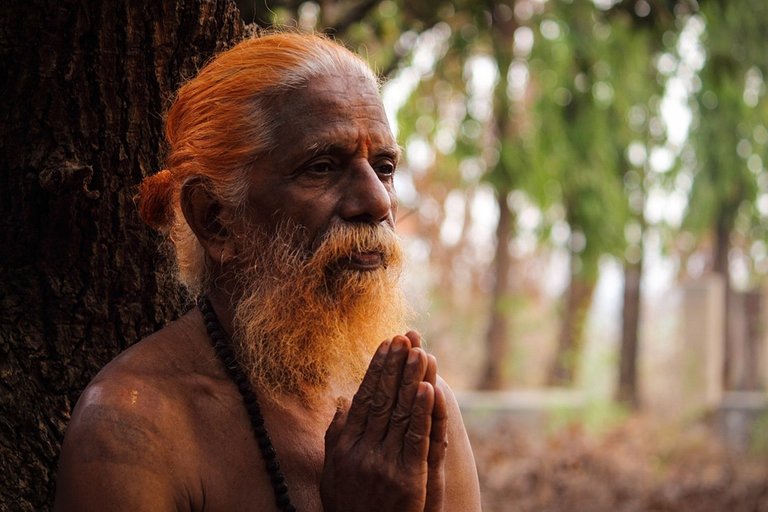Lugar Santo // Holy Place [ESP // ENG]
Hace unos días se hicieron unos preparativos para una celebración cerca en mi comunidad. La verdad no pude asistir, pero pude pensar. Y esa reflexión es la que les comparto en esta ocasión. Lo primero que me preguntó es: ¿Que hace que un lugar sea santo y otro lugar no lo sea? Y lo segundo que me pregunto es: ¿Quién dice que un lugar determinado sea santo? ¿Puedo yo por mi mismo percatarme de estar en un lugar santo (Si así fuere)?
A few days ago preparations were made for a celebration nearby in my community. I was not able to attend, but I was able to think. And that reflection is what I share with you on this occasion. The first thing I asked myself is: What makes one place holy and another place not holy? And the second thing I ask myself is: Who says that a certain place is holy? Can I myself realize that I am in a holy place (if it is)?

Imagen de Kengkreingkrai copiada desde Pixabay
Para la primera pregunta, recordando los lugares que conozco identificados como santos, el primer criterio que voy a considerar es su tamaño, desde la sola observación pareciese que el tamaño no es lo que hace que un lugar sea santo o no sea santo, los he visto desde medio metro cuadrado (Unos cinco pies cuadrados) hasta mil metros cuadrados (Casi oncemil pies cuadrados), entonces el tamaño del sitio sagrado respecto al tamaño de una persona pareciese que no es lo que lo hace santo.
For the first question, remembering the places I know identified as holy, the first criterion I will consider is their size, from the sole observation it seems that the size is not what makes a place holy or not holy, I have seen them from half a square meter (about five square feet) to a thousand square meters (almost eleven thousand square feet), so the size of the sacred site in relation to the size of a person seems not to be what makes it holy.
Su ubicación tampoco pareciese ser lo determinante, en el sentido de que alrededor del mundo que conocemos hay distintas representaciones, en todas las latitudes, en todas las longitudes. Hago la siguiente observación, cuando pienso en esto pienso en la superficie terrestre. ¿Sabes de algún sitio denominado santo que se encuentre en el mar? Yo no conozco ninguno, seguiré pensando entonces en los continentes, tierra firme por así decirlo.
Its location does not seem to be the determining factor either, in the sense that around the world we know there are different representations, at all latitudes, at all longitudes. I make the following observation, when I think of this I think of the earth's surface. Do you know of any place called holy that is in the sea? I do not know of any, so I will continue to think of the continents, dry land so to speak.
Incluso forma y color tampoco parecen ser determinantes, al menos no más allá de la armonía visual con su entorno, por los materiales disponibles en la zona y por la cultura e idiosincrasia de los habitantes cercanos al sitio en evaluación.
Even form and color do not seem to be determinant, at least not beyond the visual harmony with its surroundings, because of the materials available in the area and the culture and idiosyncrasy of the inhabitants near the site under evaluation.
Dicho esto opino que los sitios son lo que son, los conozcamos o no, los bauticemos o no. Los animales en la medida de lo posible van a todos los sitios que pueden, salvo que nosotros, el género humano, se lo impida.
Having said that, I think that places are what they are, whether we know them or not, whether we baptize them or not. As far as possible, animals go wherever they can, unless we, the human race, prevent them from doing so.

Imagen de OpenClipart-Vectors copiada desde Pixabay
Hay anécdotas y veneración desde y hacia los animales en distintas culturas. Principalmente el hinduismo, o también una combinación de animales, ósea, una criatura donde se combinan diversos aspectos, reconociendo así un súper-animal por decirlo de alguna manera.
There are anecdotes and veneration from and towards animals in different cultures. Mainly Hinduism, or also a combination of animals, that is, a creature where different aspects are combined, thus recognizing a super-animal, so to speak.

Imagen de Clker-Free-Vector-Images copiada desde Pixabay
Dicho eso, tratando de responderme me llegan dos hipótesis, se las planteo a continuación. La primera, los lugares santos son los menos visitados, aunque sean sitios donde nosotros no estemos, cuando los contemplamos en la distancia podemos ver su majestuosidad, más aún si en ellos descubrimos que hay vida (Distinta a la humana). Sea cual sea la manera en que la consigamos, en que la descubramos, es digno de detenerse y respetar que allí hay vida, maravillarse cómo se adecúan a diversas situaciones, muchas de ellas inimaginables o adversas para nosotros en general. Cuando a un sitio van grandes cantidades de personas, porque se vuelven turísticos, entonces empieza a perderse esa atmósfera de santidad que teóricamente le caracteriza.
That said, trying to answer two hypotheses come to me, I put them forward below. The first one, the holy places are the least visited, even if they are places where we are not, when we contemplate them in the distance we can see their majesty, even more if we discover that there is life (different from the human one). Whatever the way we get it, in which we discover it, it is worthy to stop and respect that there is life there, marvel at how they adapt to various situations, many of them unimaginable or adverse to us in general. When large numbers of people go to a place, because it becomes touristy, then it begins to lose that atmosphere of sanctity that theoretically characterizes it.

Imagen de Clker-Free-Vector-Images copiada desde Pixabay
La segunda hipótesis que se me ocurre es que nuestra actitud es lo que hace que un lugar sea santo, mejor dicho, que lo denominemos, lo bauticemos como santos. Somos nosotros los que le damos sentido de santidad a algo, a algún sitio. Detente por un momento y piensa. ¿En qué sitios te sientes en paz?
The second hypothesis that occurs to me is that our attitude is what makes a place holy, or rather, that we call it, we baptize it as holy. It is we who give a sense of holiness to something, somewhere. Stop for a moment and think, where do you feel at peace?

Cuando nos centramos en la actitud, todo lugar pasa a ser santo, y al ser de interés propio, se evoluciona a un sentido de respeto en general… **allí donde estás ahorita, allí es un lugar santo,** aunque no lo sepas, aunque no lo dignifiques. Mis mejores deseos para ti y que nos encontremos, profanando cada vez menos este lugar en que vivimos.
When we focus on attitude, every place becomes holy, and being of self-interest, it evolves to a sense of respect in general... **there where you are right now, there is a holy place,** even if you do not know it, even if you do not dignify it. Best wishes to you and may we meet, desecrating less and less this place we live in.
Traducción realizada con DeepL / Translation made with DeepL.
100% contenido original / 100% #original-content
Congratulations @jajopachi! You have completed the following achievement on the Hive blockchain and have been rewarded with new badge(s):
Your next target is to reach 400 upvotes.
You can view your badges on your board and compare yourself to others in the Ranking
If you no longer want to receive notifications, reply to this comment with the word
STOPCheck out the last post from @hivebuzz:
Support the HiveBuzz project. Vote for our proposal!